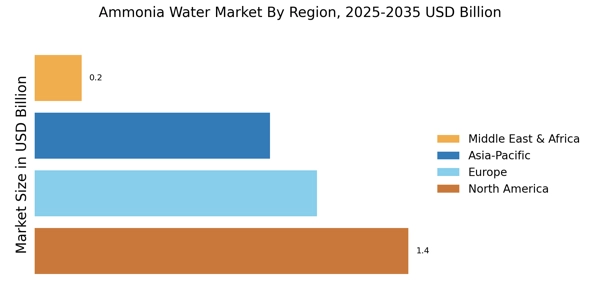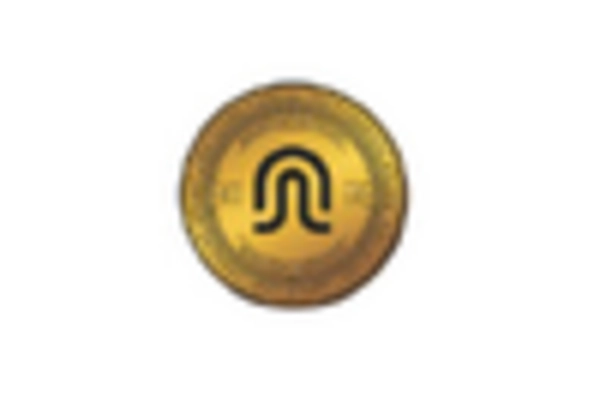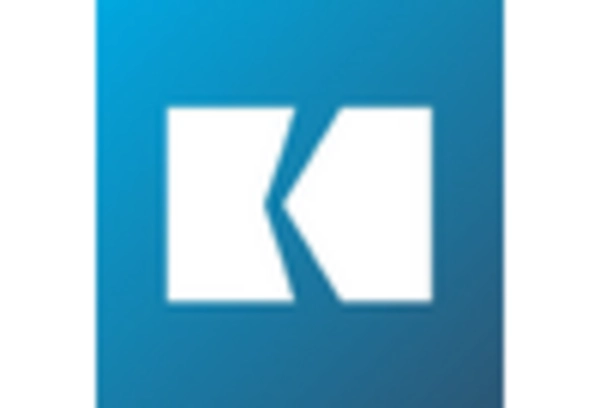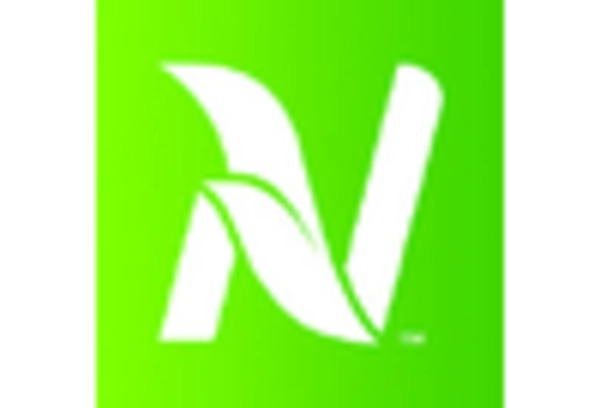Rising Demand in Agriculture
The Ammonia Water Market is experiencing a notable surge in demand due to its essential role in agriculture. Ammonia water serves as a vital source of nitrogen, which is crucial for plant growth. As agricultural practices evolve towards sustainability, the use of ammonia water is becoming increasingly prevalent. In 2025, the market is projected to witness a growth rate of approximately 5.2%, driven by the need for efficient fertilizers. This trend indicates a shift towards more environmentally friendly agricultural inputs, aligning with global efforts to enhance food security and reduce chemical usage. Consequently, the Ammonia Water Market is likely to expand as farmers seek effective solutions to improve crop yields while minimizing environmental impact.
Growing Awareness of Health and Safety
The increasing awareness of health and safety standards is driving the Ammonia Water Market towards more stringent quality controls and product formulations. As consumers and industries become more conscious of the chemicals they use, there is a growing demand for high-purity ammonia water. This trend is expected to result in a market growth rate of approximately 4.5% by 2025, as manufacturers adapt to meet these evolving standards. The emphasis on safety and quality not only enhances consumer trust but also positions the Ammonia Water Market favorably in a competitive landscape, encouraging innovation and higher production standards.
Industrial Utilization and Versatility
The versatility of ammonia water in various industrial applications significantly contributes to the growth of the Ammonia Water Market. It is utilized in sectors such as textiles, pharmaceuticals, and cleaning products, where its properties as a solvent and cleaning agent are highly valued. The market is expected to grow as industries increasingly adopt ammonia water for its cost-effectiveness and efficiency. In 2025, the industrial segment is anticipated to account for over 40% of the total market share, reflecting a robust demand for ammonia water in manufacturing processes. This trend suggests that the Ammonia Water Market will continue to thrive as industries seek reliable and efficient chemical solutions.
Environmental Regulations and Compliance
The Ammonia Water Market is significantly influenced by stringent environmental regulations aimed at reducing harmful emissions and promoting sustainable practices. Governments worldwide are implementing policies that encourage the use of less harmful chemicals, thereby boosting the demand for ammonia water as a safer alternative. In 2025, compliance with these regulations is expected to drive a 3.5% increase in market growth. This regulatory landscape not only fosters innovation in product development but also positions ammonia water as a favorable option for industries seeking to adhere to environmental standards. As a result, the Ammonia Water Market is likely to benefit from increased investments in sustainable chemical solutions.
Technological Advancements in Production
Technological advancements in the production of ammonia water are poised to enhance the efficiency and sustainability of the Ammonia Water Market. Innovations in manufacturing processes, such as improved synthesis methods and energy-efficient production techniques, are expected to lower costs and reduce environmental impact. By 2025, these advancements could lead to a 4% reduction in production costs, making ammonia water more accessible to various industries. This trend indicates that as technology continues to evolve, the Ammonia Water Market will likely experience increased competitiveness and growth, attracting new players and expanding its market reach.


















Leave a Comment